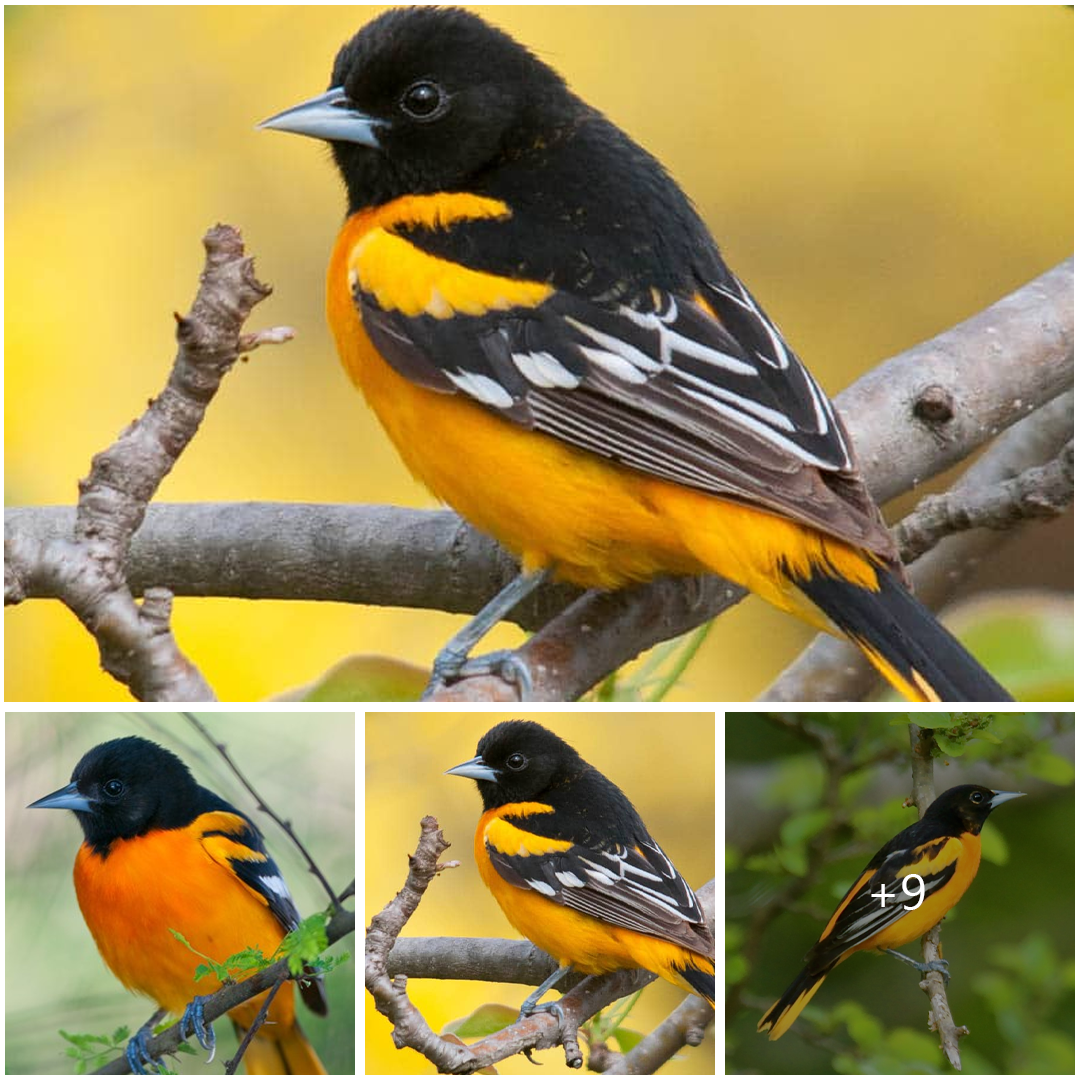
The Baltimore Oriole: A Symbol of Beauty and Resilience in North America’s Avian Realm
The Baltimore Oriole, Icterus galbula, stands as a symbol of beauty and resilience in the rich tapestry of North America’s avian realm. With its striking appearance, melodious song, and remarkable adaptability, this iconic species embodies the essence of vitality amidst ever-changing landscapes.
Native to eastern North America, the Baltimore Oriole inhabits a diverse range of habitats, from wooded areas and parks to suburban neighborhoods. Its distinctive plumage, featuring vibrant orange and black hues, distinguishes it as a charismatic ambassador of the avian world, captivating observers with its elegance and grace.
Central to the allure of the Baltimore Oriole is its enchanting song, a medley of clear whistles and musical trills that fills the air with a symphony of sounds. Their vocal prowess, often heard during the breeding season, serves as a testament to the species’ resilience and adaptability in the face of environmental challenges.
Beyond its aesthetic and auditory charms, the Baltimore Oriole plays crucial ecological roles as pollinators and insect predators. By feeding on nectar, fruits, and insects, they contribute to the health of ecosystems while helping to control populations of pests. Their presence underscores the interconnectedness of nature and highlights the importance of biodiversity conservation.
Despite facing threats such as habitat loss, pesticide use, and climate change, the Baltimore Oriole persists as a symbol of resilience and hope in the avian world. Conservation efforts aimed at preserving and restoring habitats, mitigating human-induced impacts, and fostering public awareness are essential for safeguarding the future of this iconic species.
In conclusion, the Baltimore Oriole symbolizes beauty and resilience in North America’s avian realm, reminding us of the inherent value of preserving and protecting the natural world. As custodians of our planet, it is our collective duty to ensure that this majestic bird continues to grace our skies for generations to come.





